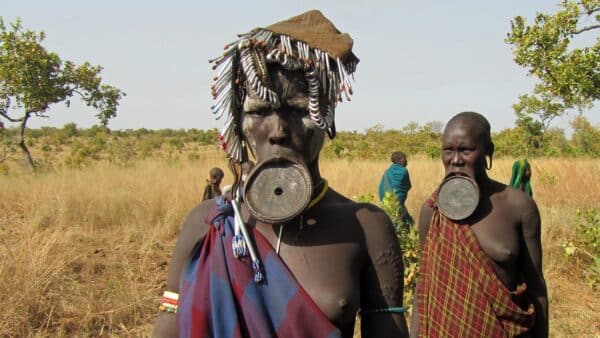Ethiopia offers a unique travel experience because of the mix of ancient history, culture and spectacular landscapes that meet and coexist in harmony here. Located in the Horn of Africa, Ethiopia is the only country on the continent that has never been colonized, and this independence has preserved a strong cultural identity. Among its most precious treasures are its UNESCO World Heritage Sites, both cultural and natural, which tell the story of this nation’s thousand-year history. The rock churches of Lalibela and the Axum stelae are probably the best known in the world. The former, carved into the rock in the 12th century, are an architectural and spiritual wonder that attracts pilgrims and visitors from all over the world. The site, an important spiritual site of Christianity, was named after King Lalibela who initiated construction with the intent of building a new Jerusalem. Axum, once the capital of the ancient Axumite kingdom, is known precisely for its famous monolithic stelae and obelisks, as well as the ruins of royal tombs and building dating from the 6th and 7th centuries AD. In addition to sites of cultural interest, Ethiopia is home to as many as 2 UNESCO natural sites that offer unique landscapes. The best known is undoubtedly the Simien Mountains National Park, which is home to rare animal species such as the gelada baboon but also the extremely rare ivory-colored Rosa abyssinica. The Simien Mountains are a continuous alternation of gorges, cliffs and steep walls. The characteristic pinnacled peaks are formations of lava origin caused by the countless eruptions that occurred more than 40 million years ago. The south of the country is also home to a hidden treasure: the cradle of several indigenous tribes, each with its own traditions, customs and ancestral rites, this area of Ethiopia is home to a variety of peoples with millennia-old customs who have preserved their identity in an ever-changing world.
Tribes in the Omo Valley, such as the Mursi, known for their lip discs, and the Hamer, famous for their bull-jumping ceremonies, live by ancient rhythms and are custodians of a culture rooted in prehistory. Many tribes live along the banks of the Omo River, which annually floods irrigating their lands and bringing nourishment to the local biodiversity, ensuring nourishment for the indigenous people, although the construction of the Gibe III dam in 2006 put crops at risk by stopping the river from flooding.
Visiting these villages is like taking a trip back in time, an opportunity to learn about an authentic reality far removed from the influences of modernity. Ethiopian cuisine is also an important aspect of the local culture. Characterized by intense and spicy flavors, it is a triumph of colors and aromas. The national dish, injera, a kind of spongy bread made from teff, is served with various stews called “wat,” often made with meat, legumes and vegetables. Also worth trying is doro wat, a spicy chicken stew, and Ethiopian coffee, prepared in a ceremony celebrating the central role of this beverage in the country’s culture. In the markets, in addition to the chance to find real local handicrafts, you can sample various local specialties while strolling through an explosion of colors and sounds. A trip to Ethiopia is a unique opportunity to immerse yourself in different cultures and discover a way of life deeply connected to the land.
You can witness ancestral rituals, visit traditional villages and share unforgettable moments with local communities. **************** If you are planning your trip to Ethiopia and want to discover the extraordinary natural beauty of the Omo Valley and Simien Mountains, check out our program Ethiopia: trekking to the peoples of the South..



